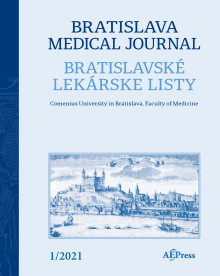 “Chronic neuropathic pain (NEP) is associated with growing therapeutic cannabis use. To promote quality of life without psychotropic effects, cannabinoids other than Δ9-tetrahydrocannabidiol, including cannabidiol and its precursor cannabidiolic acid (CBDA), are being evaluated. Due to its instability, CBDA has been understudied, particularly as an anti-nociceptive agent. Adding a methyl ester group (CBDA-ME) significantly enhances its stability, facilitating analyses of its analgesic effects in vivo. This study examines early treatment efficacy of CBDA-ME in a rat model of peripherally induced NEP and evaluates sex as a biological variable.
“Chronic neuropathic pain (NEP) is associated with growing therapeutic cannabis use. To promote quality of life without psychotropic effects, cannabinoids other than Δ9-tetrahydrocannabidiol, including cannabidiol and its precursor cannabidiolic acid (CBDA), are being evaluated. Due to its instability, CBDA has been understudied, particularly as an anti-nociceptive agent. Adding a methyl ester group (CBDA-ME) significantly enhances its stability, facilitating analyses of its analgesic effects in vivo. This study examines early treatment efficacy of CBDA-ME in a rat model of peripherally induced NEP and evaluates sex as a biological variable.
KEY RESULTS:
In males, CBDA-ME elicited a significant concentration-dependent chronic anti-hyperalgesic effect, also influencing both nociceptive and non-nociceptive mechanoreceptors, which were not observed in females at any of the concentrations tested.
CONCLUSION AND IMPLICATIONS:
Initiating treatment of a peripheral nerve injury with CBDA-ME at an early stage post-surgery provides anti-nociception in males, warranting further investigation into potential sexual dimorphisms underlying this response.”
https://www.ncbi.nlm.nih.gov/pubmed/31981216
https://bpspubs.onlinelibrary.wiley.com/doi/abs/10.1111/bph.14997

 “Given the growing challenges in chronic pain management coupled with the ongoing consequences of the opioid epidemic, pain management practitioners are looking into more effective, innovative, and safer alternatives to treat pain.
“Given the growing challenges in chronic pain management coupled with the ongoing consequences of the opioid epidemic, pain management practitioners are looking into more effective, innovative, and safer alternatives to treat pain. “Abnormal
“Abnormal  “Parkinson’s disease is a neurodegenerative disorder, the motor symptoms of which are associated classically with Lewy body formation and nigrostriatal degeneration.
“Parkinson’s disease is a neurodegenerative disorder, the motor symptoms of which are associated classically with Lewy body formation and nigrostriatal degeneration. “It has been hypothesized that besides its intraocular pressure (IOP) lowering potential, tetrahydrocannabinol (THC) may also improve ocular hemodynamics.
“It has been hypothesized that besides its intraocular pressure (IOP) lowering potential, tetrahydrocannabinol (THC) may also improve ocular hemodynamics. “Epilepsy is a neurological disorder characterized by the presence of seizures and neuropsychiatric comorbidities. Despite the number of antiepileptic drugs, one-third of patients did not have their seizures under control, leading to pharmacoresistance epilepsy.
“Epilepsy is a neurological disorder characterized by the presence of seizures and neuropsychiatric comorbidities. Despite the number of antiepileptic drugs, one-third of patients did not have their seizures under control, leading to pharmacoresistance epilepsy. “Osteoarticular equine disease is a common cause of malady; in general, its therapy is supported on steroids and nonsteroidal anti-inflammatories. Nevertheless, many side effects may develop when these drugs are administered. Nowadays, the use of new alternatives for this pathology attention is demanded; in that sense,
“Osteoarticular equine disease is a common cause of malady; in general, its therapy is supported on steroids and nonsteroidal anti-inflammatories. Nevertheless, many side effects may develop when these drugs are administered. Nowadays, the use of new alternatives for this pathology attention is demanded; in that sense,  “The aim of this review article is to summarize current knowledge about the role of cannabinoids and cannabinoid receptors in tumor disease modulation and to evaluate comprehensively the use of cannabinoids in cancer patients.
“The aim of this review article is to summarize current knowledge about the role of cannabinoids and cannabinoid receptors in tumor disease modulation and to evaluate comprehensively the use of cannabinoids in cancer patients. “Contact hypersensitivity (CHS) is an established animal model for allergic contact dermatitis. Dendritic cells (DCs) play an important role in the sensitization phase of CHS by initiating T cell responses to topically applied haptens. The cannabinoid receptors 1 (CB1) and 2 (CB2) modulate DC functions and inflammatory skin responses, but their influence on the capacity of haptenized DCs to induce CHS is still unknown. We found lower CHS responses to 2,4-dinitro-1-fluorobenzene (DNFB) in wild type (WT) mice after adoptive transfer of haptenized Cnr2-/- and Cnr1-/-/Cnr2-/- bone marrow (BM) DCs as compared to transfer of WT DCs. In contrast, induction of CHS was not affected in WT recipients after transfer of Cnr1-/- DCs. In vitro stimulated Cnr2-/- DCs showed lower CCR7 and CXCR4 expression when compared to WT cells, while in vitro migration towards the chemokine ligands was not affected by CB2. Upregulation of MHC class II and co-stimulatory molecules was also reduced in Cnr2-/- DCs. This study demonstrates that CB2 modulates the maturation phenotype of DCs but not their chemotactic capacities in vitro. These findings and the fact that CHS responses mediated by Cnr2-/- DCs are reduced suggest that CB2 is a promising target for the treatment of inflammatory skin conditions.”
“Contact hypersensitivity (CHS) is an established animal model for allergic contact dermatitis. Dendritic cells (DCs) play an important role in the sensitization phase of CHS by initiating T cell responses to topically applied haptens. The cannabinoid receptors 1 (CB1) and 2 (CB2) modulate DC functions and inflammatory skin responses, but their influence on the capacity of haptenized DCs to induce CHS is still unknown. We found lower CHS responses to 2,4-dinitro-1-fluorobenzene (DNFB) in wild type (WT) mice after adoptive transfer of haptenized Cnr2-/- and Cnr1-/-/Cnr2-/- bone marrow (BM) DCs as compared to transfer of WT DCs. In contrast, induction of CHS was not affected in WT recipients after transfer of Cnr1-/- DCs. In vitro stimulated Cnr2-/- DCs showed lower CCR7 and CXCR4 expression when compared to WT cells, while in vitro migration towards the chemokine ligands was not affected by CB2. Upregulation of MHC class II and co-stimulatory molecules was also reduced in Cnr2-/- DCs. This study demonstrates that CB2 modulates the maturation phenotype of DCs but not their chemotactic capacities in vitro. These findings and the fact that CHS responses mediated by Cnr2-/- DCs are reduced suggest that CB2 is a promising target for the treatment of inflammatory skin conditions.”